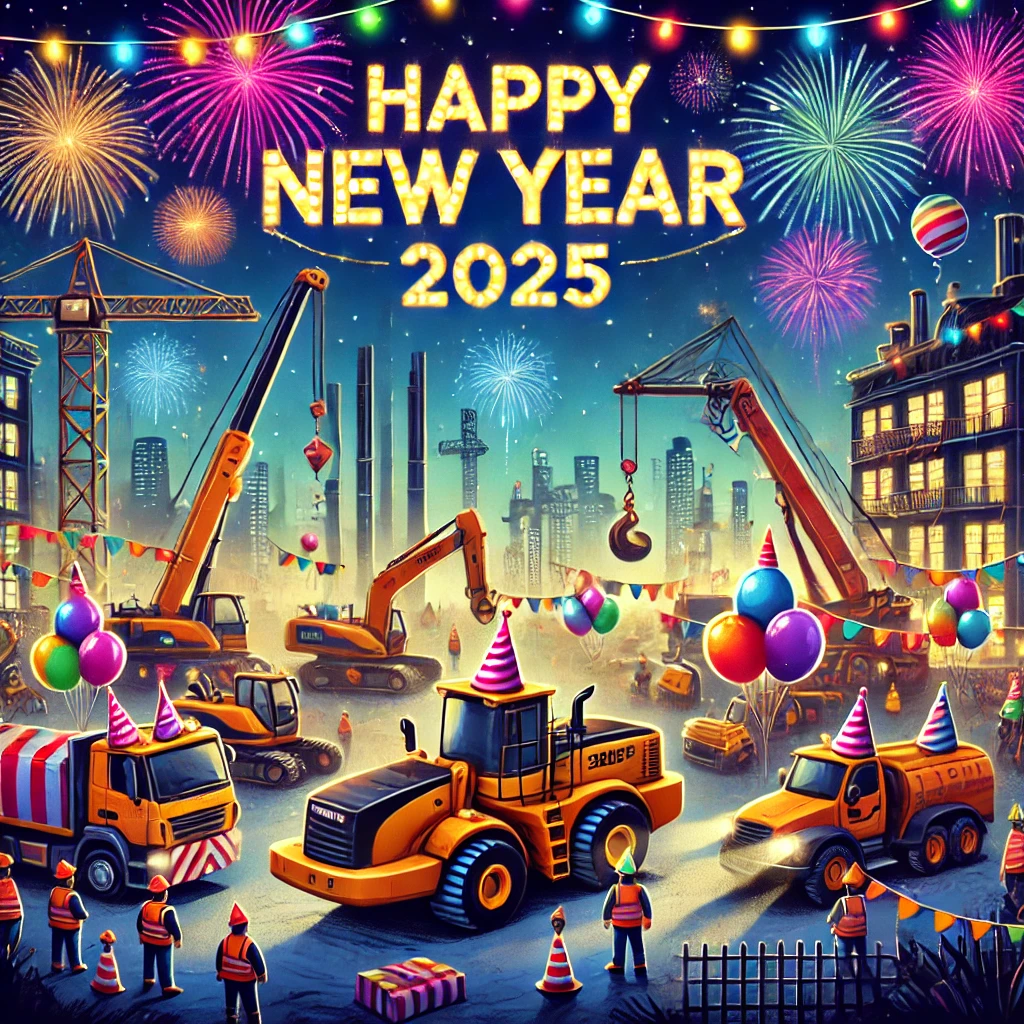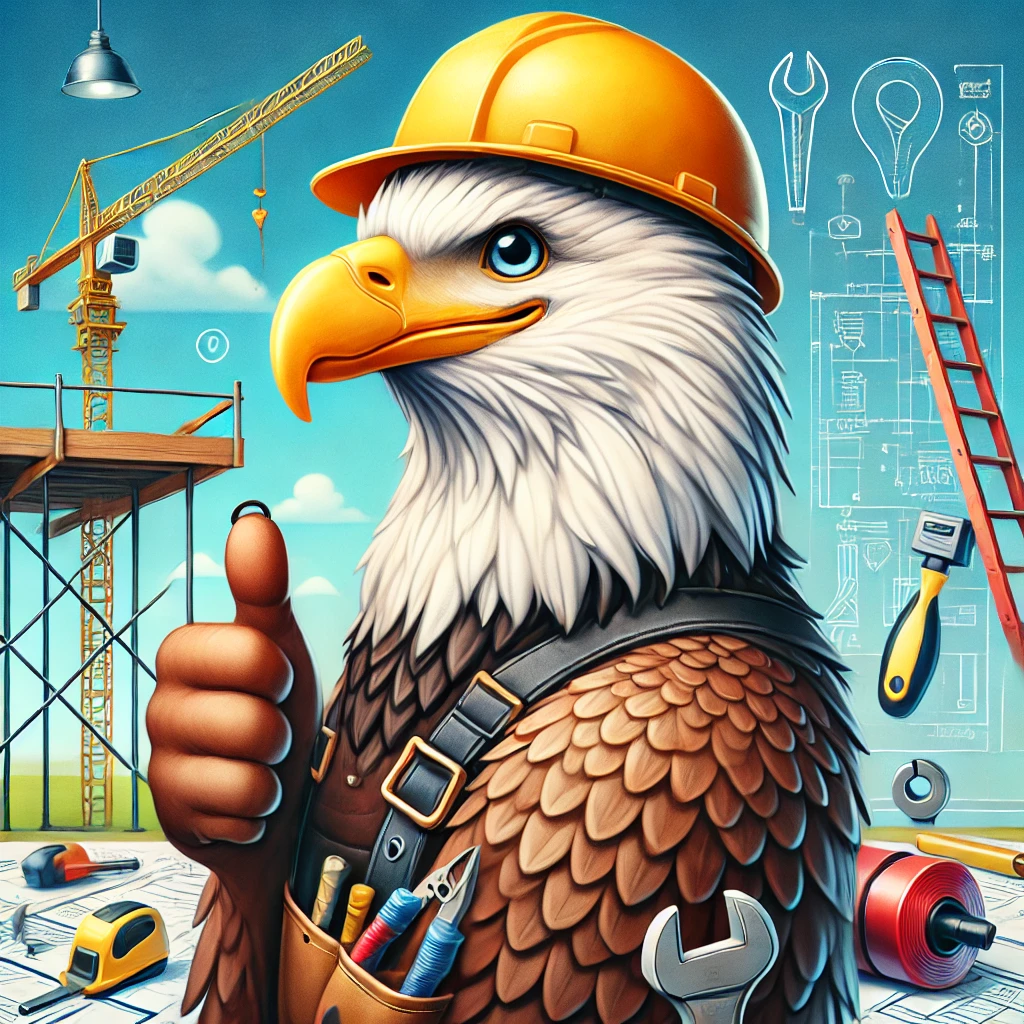Building a Better Future: 2025 New Year Resolutions for the Construction Industry
As the owner and a directing member of a national construction company with revenue in 2024 of 750M*, I look forward every New Year with resolutions and goals, building on the previous year’s lessons.
I hope my list provides you with some insights into what we are working on at __company name withheld*___. Stay focused on what your company is good at and stay on top of everything. Things will happen, mistakes will be made, and events unfold from the smallest details….but the biggest variable is the people. Invest in your people and your company will thrive!
–*Company Name withheld to focus on content—-
Every New Year offers an opportunity to reflect on our achievements and challenges while setting meaningful goals to drive growth, innovation, and positive change. Over the past few years, the construction industry has faced hurdles like labor shortages, supply chain disruptions, increased regulatory demands, and environmental concerns. To navigate these issues effectively, here are my 2025 resolutions—aimed not only at addressing persistent problems but also at positioning my company as a leader in a rapidly evolving industry. My resolutions are built from industry information leaders.
1. Commit to Sustainability
One of my top priorities this year is integrating sustainable practices into every project. This includes using eco-friendly materials, designing energy-efficient buildings, and minimizing construction waste. According to the U.S. Green Building Council (USGBC), buildings account for nearly 40% of global carbon emissions. By adopting green building standards like LEED certification, we can reduce our carbon footprint while attracting clients who value environmental responsibility.
Action Steps:
- Use materials with a lower environmental impact, such as recycled steel or cross-laminated timber.
- Prioritize designs that incorporate renewable energy sources like solar panels.
- Set up recycling programs on job sites to reduce landfill waste.
Resources: USGBC, Energy Star for Buildings
2. Leverage Advanced Technology
Technology is transforming the construction industry, and staying ahead means embracing tools like Building Information Modeling (BIM), drones, and the Internet of Things (IoT). BIM, for example, allows for more accurate project planning and real-time adjustments, reducing errors and costly rework. Drones and IoT sensors enhance safety and efficiency by providing site monitoring and data analytics.
Action Steps:
- Train my team in BIM software and other digital tools.
- Use drones for site surveys and progress monitoring.
- Invest in IoT devices for predictive maintenance and safety compliance.
Resources: Autodesk, Procore, Trimble
3. Enhance Workforce Safety and Training
Worker safety is non-negotiable. According to the Bureau of Labor Statistics, construction remains one of the most hazardous industries. In 2025, I’ll focus on conducting regular safety training sessions, equipping workers with modern safety gear, and fostering a culture of accountability.
Action Steps:
- Schedule monthly safety drills and workshops.
- Implement wearable technology that monitors worker health and alerts teams to potential hazards.
- Reward teams for achieving safety milestones to reinforce positive behavior.
Resources: OSHA’s Safety and Health Topics, CPWR—The Center for Construction Research and Training
4. Tackle Labor Shortages
The construction labor shortage has been a persistent challenge. In 2025, I’ll work to attract and retain skilled workers by building relationships with educational institutions and creating apprenticeship programs. By doing so, we can cultivate a talent pipeline and offer younger generations a clear career path in construction.
Action Steps:
- Partner with local vocational schools and trade programs.
- Develop mentorship opportunities for young professionals.
- Offer competitive wages and benefits to retain existing employees.
Resources: Associated Builders and Contractors (ABC), National Association of Home Builders (NAHB)
5. Improve Project Management and Communication
Miscommunication often leads to delays and rework, increasing costs. This year, I’m committed to adopting collaborative tools and refining our processes to ensure all stakeholders—clients, subcontractors, and suppliers—are on the same page.
Action Steps:
- Use project management platforms like Procore or Monday.com for centralized communication.
- Conduct weekly progress meetings to address issues early.
- Create clear documentation of project expectations and milestones.
Resources: Procore, Monday.com, Asana
6. Strengthen Supply Chain Resilience
Supply chain disruptions in recent years have underscored the need for more resilient strategies. My 2025 goal is to diversify our suppliers and develop contingency plans to avoid project delays.
Action Steps:
- Build relationships with multiple suppliers to reduce reliance on a single source.
- Stockpile critical materials for high-risk projects.
- Use supply chain management software to track inventory and anticipate shortages.
Resources: SAP, Oracle, Supply Chain Dive
7. Promote Diversity and Inclusion
Diversity drives innovation, and an inclusive workplace fosters collaboration. As we grow, I’ll implement policies that prioritize hiring from underrepresented groups and ensure that our workplace culture supports everyone.
Action Steps:
- Establish diversity targets and track progress.
- Create Employee Resource Groups (ERGs) to support inclusion.
- Provide unconscious bias training for leadership and staff.
Resources: National Association of Minority Contractors (NAMC), Construction Inclusion Week
8. Adopt Circular Economy Practices
The concept of a circular economy—where waste is minimized, and materials are reused—is gaining traction. By designing projects with deconstruction and recycling in mind, we can save money and reduce our environmental impact.
Action Steps:
- Partner with recycling facilities for demolition projects.
- Design modular buildings that can be easily disassembled and reused.
- Use reclaimed materials when feasible.
Resources: Ellen MacArthur Foundation, Construction & Demolition Recycling Association (CDRA)
9. Focus on Mental Health and Well-Being
Construction workers often face high stress levels, and addressing mental health is essential for productivity and morale. This year, I’ll introduce initiatives to support my team’s well-being.
Action Steps:
- Offer access to mental health professionals and counseling services.
- Encourage work-life balance by limiting overtime and offering flexible schedules.
- Regularly check in with employees to understand their concerns.
Resources: National Alliance on Mental Illness (NAMI), Mindful Business Charter
10. Set Tangible Productivity Goals
Lastly, 2025 is the year to refine our productivity strategies. By analyzing past projects, identifying bottlenecks, and setting measurable goals, we can complete projects on time and within budget.
Action Steps:
- Use historical data to benchmark performance and set realistic targets.
- Automate repetitive tasks to free up resources for critical activities.
- Encourage teams to suggest process improvements.
Resources: McKinsey’s Construction Productivity Report, Lean Construction Institute
Conclusion
By committing to these resolutions in 2025, our company* can address the pressing challenges in our industry while building a foundation for long-term success. The construction landscape is evolving, and as leaders, it’s our responsibility to adapt, innovate, and lead by example. Whether it’s through sustainability, technology, or workforce development, these steps will ensure our company’s resilience and growth in the years to come.




